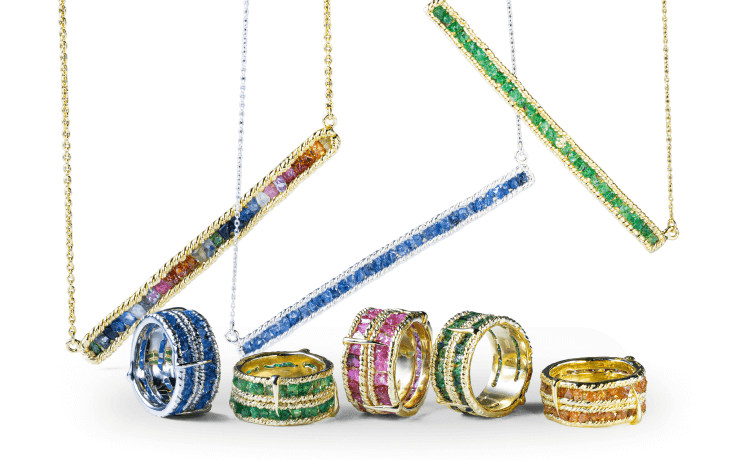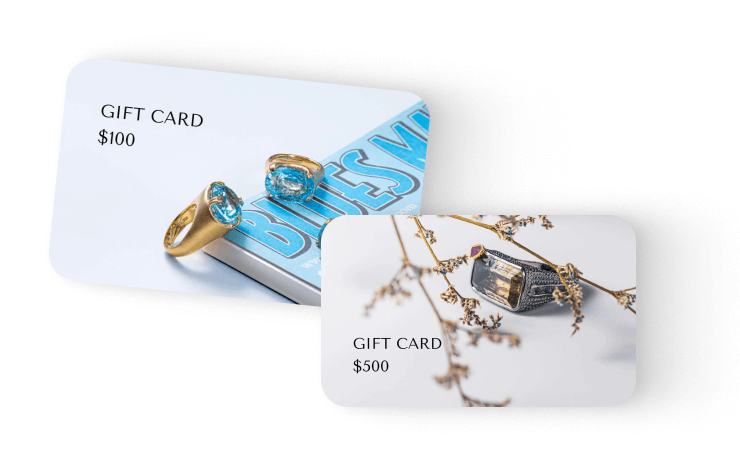Natural Peridot: The Apple-Green Gemstone

Peridot in Modern Designer Jewelry: Contemporary and Classic
Did you know that Peridot is one of the few gemstones found in meteorites? These extraterrestrial gems, known as pallasitic peridot, offer a cosmic connection that makes this stone even more fascinating
Peridot, with its vibrant apple green hue, is a gemstone that has captivated humans for centuries. Known scientifically as olivine, Peridot forms deep within the Earth’s mantle and is brought to the surface by volcanic activity. This stone is particularly valued for its unique and consistent green color, which ranges from a bright lime to a rich olive, depending on the amount of iron present.
This perception has changed recently, thanks to a renewed interest in vintage and eclectic fashion. Today’s designers are repurposing brooches as statements of personality and unique style, transforming them from outdated jewelry pieces into modern wearable art. This shift has reintroduced brooches to a new generation, who value both their historical significance and their contemporary aesthetic appeal.
What Do We Love About Peridot?
In modern designer jewelry, Peridot is cherished for its fresh and lively appearance. Its distinct color adds a touch of nature and brightness to any piece, making it a versatile gem for various styles and settings. Whether set in rings, necklaces, earrings, or bracelets, Peridot’s vibrant green can either stand alone as a bold statement or complement other stones and metals for a more intricate design.
Peridot is often featured in contemporary jewelry designs that aim to highlight its natural beauty. For instance, it is commonly set in minimalist pieces where the gemstone is the focal point, allowing its color to shine without distraction. In more elaborate designs, Peridot is paired with diamonds or other colored gemstones, creating a striking contrast that enhances its green vibrancy.
German Kabirski loves Peridot for its striking color, which really pops against metals like gold, silver, and black plating, as well as other gemstones. Known for embracing contradictions in his designs, Kabirski finds that Peridot’s vivid green adds a unique edge to his pieces. Even though he has a soft spot for raw gems, he opts for cut Peridot exclusively. You can find it in various cuts like round, oval, emerald, cushion, and pear. The trillion cut, in particular, looks especially cool, enhancing Peridot’s brightness and making it the perfect focal point for his unconventional and eye-catching jewelry designs.

Ancient Beliefs: Peridot - The Gem Of Sun
This gemstone is not only beautiful but also has a rich historical significance. Ancient Egyptians called it the "gem of the sun," and it has been used for centuries in various cultures as a protective talisman. Peridot was believed to protect its wearer from evil spirits and bring good fortune. Similarly, ancient Romans admired its vibrant color and thought it could bring happiness and calmness to the mind. In Hawaiian culture, Peridot symbolizes the tears of Pele, the goddess of volcanoes, reflecting its volcanic origins. In medieval Europe, it was believed to dispel nightmares and terrors of the night, offering a restful sleep to its owner. Today, its affordability compared to other green gemstones like emeralds makes it an attractive option for both designers and consumers looking for high-quality, eye-catching jewelry without a hefty price tag.
Natural Peridot’s Gemological Properties
Peridot, a gem-quality variety of the mineral olivine, possesses several unique gemological properties that contribute to its appeal. Its vibrant green color is due to the presence of iron, with the shade ranging from yellow-green to olive, depending on the iron content. Peridot has a hardness of 6.5 to 7 on the Mohs scale, making it durable enough for most types of jewelry but requiring care to avoid scratches.
The gemstone has a specific gravity between 3.2 and 4.3 and exhibits a vitreous luster. Peridot’s refractive index ranges from 1.65 to 1.69, which gives it a noticeable brilliance. It also has a strong double refraction, which means that when viewed under a magnifying glass, the facet edges appear doubled. This optical characteristic enhances its visual appeal, especially in well-cut stones.
Peridot typically forms in the earth's mantle and is brought to the surface by volcanic activity, but it can also be found in meteorites, known as pallasites, adding an extraterrestrial allure to its gemological story. The gemstone is usually cut in various shapes including round, oval, emerald, cushion, pear, and the especially cool trillion cut, which maximize its brightness and highlight its distinct green color. These properties make Peridot not only a visually stunning gemstone but also one with a fascinating geological and extraterrestrial history.
Peridot: Frequently Asked Questions About Apple-Green Gemstone
Peridot sparks curiosity among gem enthusiasts and jewelry lovers. People frequently have questions about its properties, value, and cultural significance. In this section, we'll address some of the most common inquiries about Peridot, providing clear and concise answers to help you better understand this captivating gemstone.
Where is Peridot Found?
Peridot can be found in several locations around the world, including the United States (primarily Arizona and Hawaii), Pakistan, Myanmar, Vietnam, Australia, Brazil, China, Egypt, and Sri Lanka. Historically, the Red Sea island of Zabargad (St. John's Island) was a significant source for ancient Mediterranean civilizations.
Is Peridot Expensive?
Peridot is generally more affordable compared to other gemstones like rubies, sapphires, and diamonds. The price varies based on factors such as size, color, and clarity. While high-quality Peridot with a deep green color can be more expensive, it is usually considered a budget-friendly option for gemstone jewelry.
Can Peridot Gemstones Be Worn Every Day?
Peridot has a hardness of 6.5 to 7 on the Mohs scale, making it relatively durable but still susceptible to scratches and damage. It is suitable for everyday wear if set securely and cared for properly. Avoid exposing it to harsh chemicals and extreme temperatures to maintain its beauty.
What is Peridot Stone Good For?
Peridot is believed to promote positivity, renewal, and growth. It is thought to offer protection from negative energy and enhance feelings of calmness and connection with nature. Many cultures have historically attributed good fortune and protection properties to this gemstone.
How is Peridot Formed?
Peridot is one of the few gemstones formed deep within the Earth's mantle and brought to the surface by volcanic activity. It can also be found in meteorites, known as pallasitic Peridot, adding to its unique geological story.
What Determines the Value of a Peridot?
The value of a Peridot is determined by its color, clarity, cut, and carat weight. The finest Peridots have a pure green color without yellow or brown tints, few visible inclusions, and are well-cut. Larger stones with these qualities are particularly valuable.
How Rare is Peridot?
While Peridot is not as rare as some other gemstones, high-quality specimens with rich green color and excellent clarity are less common. Peridot is more abundant than diamonds, rubies, and emeralds, but finding large, flawless stones can still be challenging. Its relative abundance contributes to its affordability and accessibility in the gemstone market.
Are There Any Famous Peridots?
Historically, many large Peridots were mistaken for emeralds. Notably, some of Cleopatra’s supposed emeralds were actually Peridots. The Shrine of the Three Holy Kings in Cologne, Germany, is topped with what were long thought to be emeralds but are actually Peridots.
Is Peridot a Good Investment?
Peridot is generally not considered a high-value investment compared to gemstones like diamonds, rubies, or sapphires. However, its affordability and increasing popularity in designer jewelry make it a desirable choice for personal enjoyment and everyday wear. Investing in high-quality Peridot with excellent color and clarity can be worthwhile, but it is less likely to yield significant financial returns compared to rarer gemstones.
What Are Other Gemstones That Look Like Peridot?
Other gemstones that can resemble Peridot include green tourmaline, green sapphire, and chrysoberyl. Tsavorite garnet and demantoid garnet can also exhibit a similar green hue. It's important to note that these stones have different properties and values, so proper identification by a gemologist is recommended.

Discover the Buds and Beans Collection by German Kabirski
German Kabirski's new Buds and Beans Collection is all about celebrating natural green gemstones, and Peridot takes the spotlight in this lineup. This collection features a variety of Peridot pieces, each showcasing the gemstone's unique beauty in unconventional statement and minimalist designs.
You'll find Peridot in every cut and size imaginable, from sleek solitaires to intricate combinations with other gemstones and pearls. The collection includes earrings, rings, bracelets, and pendants, each designed to capture the essence of life and growth. The vibrant green of Peridot symbolizes renewal and vitality, making each piece in the collection a statement of natural beauty.
Check out the Buds and Beans Collection and see how Peridot shines in German Kabirski's distinctive style.







1 comment
That vibrant apple green color is so unique—it really stands out from other gemstones. Thanks for sharing the historical and astrological insights. Peridot deserves more attention!
Also Visit :- https://www.navratan.com/categories/peridot-stone
Aftab Ahmed
Share your comment
This site is protected by hCaptcha and the hCaptcha Privacy Policy and Terms of Service apply.